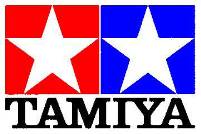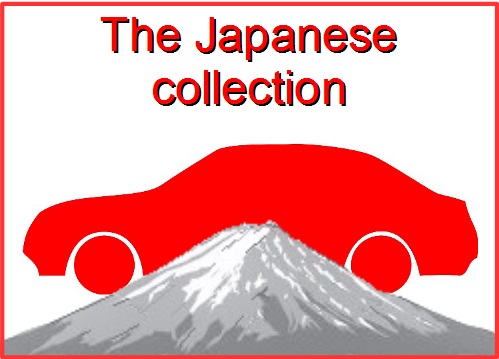
1936 Toyoda Model AA sedan
The Toyoda company never had any links with the automotive industry. It was a Spinning and Weaving Company set up by Sakichi Toyoda in 1918. His 1924 invention, the Toyoda Model G Automatic Loom was, a revolution in that it automatically stops when a problem occurs, saving production time as the fault is fixed quickly and yarn as it isn’t using up this resource continuing to produce an imperfect fabric. This principle is called “jidoka” in Japan. In 1926 Sakichi Toyoda founded the Toyoda Automatic Loom Works, Ltd. and produced the automatic looms on a small production line. Toyoda became a major producer and exporter of Japanese fine silk and the automatic loom came to the attention of many fabric and industrial companies around the world. Toyoda quickly patented his design.
Sakichi Toyoda’s son, Kiichiro Toyoda was appointed a director of the Toyoda company but his interests were in motor cars, not the family business. He travelled widely across the United States and Europe studying the industry and production techniques. When Sakichi Toyoda’s cousin encouraged him diversify as silk demand was falling Toyoda gave into his son’s pressure and looked seriously at the motorcar industry. This was also an area of production encouraged by the Japanese government as the ongoing war with China meant the Military needed mechanised transport urgently.
So it was, that in 1929 Toyoda sold the patent and production rights for his automatic loom to the British firm of Platt Brothers garnering a princely sum of £100,000. This funding was passed to Kiichiro Toyoda so he could lead development of a petrol engine and mechanical vehicles. In 1933 Kiichiro Toyoda became the first director of the Toyoda automobile department and, in due course, the Toyota industries Co., Ltd.
Researching into the gasoline-powered engines had begun in 1930 and the first production unit, the type A engine, was built in 1935 and the G1 truck went on sale, primarily to the Japanese government, from August 1935.
Inspired by his visits to America and Europe Kiichiro Toyoda entrepreneurial thinking is directed to passenger vehicles and the company works hard to the Type AA saloon and AB cabriolet on the market from April 1936, and once again the majority of sales went to the government for military applications.
It was clear to Kiichiro that the companies’ automobiles and factories had a strong future, and the company name needed a wider appeal not just to Japanese markets but to other Asian countries too. This led to the July 1936 public competition to design a new company logo which had 27,000 entries and threw up an oval with the family name of "Toyoda" written in Japanese katakana letters.
Rizaburo Toyoda the son-in-law of founder Sakichi Toyoda, believed the use of the name "Toyoda" in a circle was more appealing. This word used eight brush strokes and eight is a lucky number in Asia, it also gave a stronger image than Toyoda which is literally translated as "fertile rice paddies". In August 1937, the new trademarked and the company was registered newly formed Toyota Motor Company were registered in Japan.
Toyoda’s first passenger car prototype passenger car, the “Toyoda Model A1" was finished in May 1935, two others quickly followed and the cars were evaluated. None of these cars survive today but they directly led to the production of the Toyoda “Model AA” from April 1936 at the production facility at Koromo, Japan.
The Model AA four door sedan had a very American look to it appearing very much like the 1934 Chrysler De Soto Airflow. It is suggested in some areas that parts were actually interchangeable with the American vehicle. The wheel Arches, wide doorsills and the three veins on the bonnet sides behind the front wheel arches are all visual ques to this similarity but the design was by no means a simple copy of the Popular Airflow. The metal ladder chassis and many electrical elements had a distinctly Ford feel to them and the Engine is modelled on a Chevrolet unit of the day. The Body was a full metal unit well ahead of the traditional fabric over wooden frame so in all ways the car was a large step forward for the fledgling Japanese Automobile industry. The rear back to front opening “suicide” doors might have been popular in Japan too.
The whole design philosophy was based around passenger space and comfort, particularly the rear passengers. The Model AA had a full metal body and a windscreen that was full width aiding visibility, something required given the rather long bonnet. Also aiding visibility, this time in bad weather, was a discrete ‘top-down’ windscreen wiper. A spacious cabin gave room for the large three-spoke wooden steering wheel protruding form a narrow dashboard faced with dark wood and small chrome-ringed dials. The necessary switches and knobs were centrally above the long floor-mounted gear lever. A 3,389 cc inline 6-cylinder OHV petrol engine developed 65bhp @ 3,000 rpm and was connected to a three-speed manual gearbox.
In keeping with this best of all world’s idea the cars horn was given a different sound to that usually found in American or European cars. Cars were rare in Japan and the horses were often frightened not only by the engine noises but by the warning horns too. In a novel attempt to ease the horses alarms the company engineered the AA’s horn to make a sound similar to the cry of the Tofu vendor’s which was a familiar to horses and didn’t disquiet them; if you ever hear an AA’s horn it sounds like it is calling “To-Fu”, “To-Fu”.
The Toyoda Model AB was an AA without a fixed roof, a cabriolet Phaeton. By far the majority of these went to the Japanese army so are finished in a khaki shade and code named ABR. The mechanical aspects of the AB are the same as the AA but the windscreen is different being hinged, so it could be folded forward onto the bonnet, and the rear seat was pushed back to allow for occasional seats to be fitted in between the front and rear seats. The folding roof was a cloth canvass rather than any leather and in another difference the rear doors opened in the usual manner.
1,404 AA sedans were produced from 1936 to 1943 for a sales price of 3,350 yen; around 400 yen cheaper than imported American cars. 353 AB convertibles, including the military ABR’s, were built between 1936 to 1938. The range was extended through the similar AE, AC and BA sedans but was replaced by a much more modern post war SA series.
When Toyota started planning for the companies 50th anniversary wanted to add a Model AA to the company’s museum and use it as a centre piece for celebrations. However, Toyoda hadn’t saved any and given the wartime problems and post war situation those that had been sold had disappeared. Toyota started looking overseas thinking that an exported car of military AB might be found in the previous Japanese sphere of influence; they could not find one anywhere! TMC’s answer to this predicament was to make a new one from the surviving plans. It turned out to be a major project as there wasn’t a complete, or even consistent, set of said schematics to work from. Undaunted Toyota’s engineers persevered and a single replica now resides in the Toyota Automobile Museum in Aichi Prefecture, Japan. For years this was thought to be the only “AA” in existence then one was found in Russia but in a heavily modified form.
The Toyota Motor Corporation, selling cars under the Toyota, Hino, Lexus, Scion and Ranz brands, is now the world’s biggest car company, partly because the principle of jidoka which Sakichi Toyoda constituted in his loom factory still exists in Toyota’s car factories. Incidentally Toyota have one of these automated looms in the company museum and Toyota Group still produced computerised automatic looms and sewing machines today.











Tamiya released their 1/24th scale kit of the Toyoda Model AA, kit # 24339, in 2015, three years after Toyota’s 75th anniversary. As you would expect of a Tamiya kit it is eminently build-able and an accurate representation of this important car.
Rod built this model in 2016 using Halfords acrylic car spray paints for the main body colour. Bare metal foil supplements the kits chrome parts and Humbrol enamels and acrylics, Revell acrylics and the Games Workshops Citadel acrylic washes took care of the interior and detail painting.
RETURN TO :-
